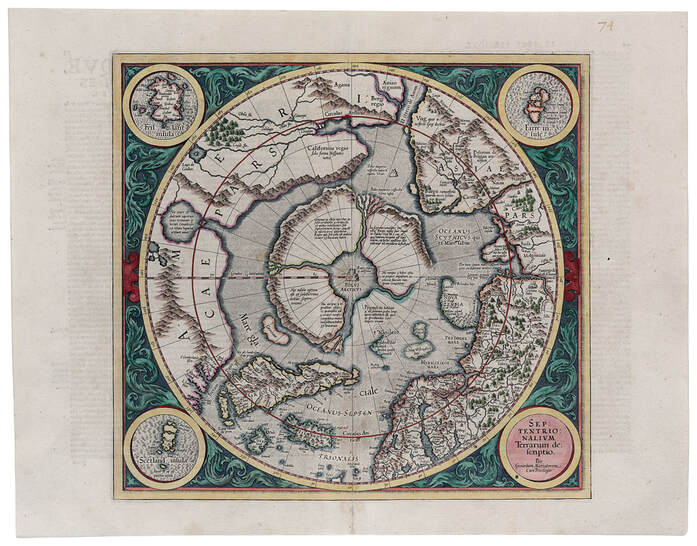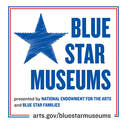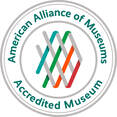Gerard Mercator
Septentrionalium Terrarum descriptio
Amsterdam 1595
Septentrionalium Terrarum descriptio
Amsterdam 1595
The innovative and well-known cartographer and author of this map, Gerard Mercator, died in 1594, leaving his son Rumold to publish it in the last of three parts forming the famous Mercator atlas Atlantis Pars Altera. This is not only the first, but also the most influential map to be devoted to the Arctic.
This particular map is the second state (edition or version) and was published by Jodocus Hondius in a French-language edition of Mercator's atlas in 1606.
Of particular interest is the identification of the northern portion of the North American continent as California, the first use of the word other than in identifying the peninsula later known as Lower (or Baja) California. Here, California is identified as Spanish territory, El streto de Anian is clearly shown, and importantly the notion of a northwest passage between the Atlantic and the Pacific Oceans is reinforced by this view of the top of the world. In the corners of the map are four roundels, the lower left of which contains the title of this map; the others contain maps of the Faeroe Isles, the Shetland Islands and the mythical island of Frisland (located on the map southwest of Iceland).
The North Pole is encompassed by four islands (one of which is only partially shown) separated by four strongly running rivers. According to the popular myth of the time (4), the four rivers carried the oceans of the world toward a giant whirlpool at the Pole, where there stood a large rock, clearly shown here.
(4) Burden, Mapping of America, page 113.
NEXT MAP
PREVIOUS MAP
This particular map is the second state (edition or version) and was published by Jodocus Hondius in a French-language edition of Mercator's atlas in 1606.
Of particular interest is the identification of the northern portion of the North American continent as California, the first use of the word other than in identifying the peninsula later known as Lower (or Baja) California. Here, California is identified as Spanish territory, El streto de Anian is clearly shown, and importantly the notion of a northwest passage between the Atlantic and the Pacific Oceans is reinforced by this view of the top of the world. In the corners of the map are four roundels, the lower left of which contains the title of this map; the others contain maps of the Faeroe Isles, the Shetland Islands and the mythical island of Frisland (located on the map southwest of Iceland).
The North Pole is encompassed by four islands (one of which is only partially shown) separated by four strongly running rivers. According to the popular myth of the time (4), the four rivers carried the oceans of the world toward a giant whirlpool at the Pole, where there stood a large rock, clearly shown here.
(4) Burden, Mapping of America, page 113.
NEXT MAP
PREVIOUS MAP






